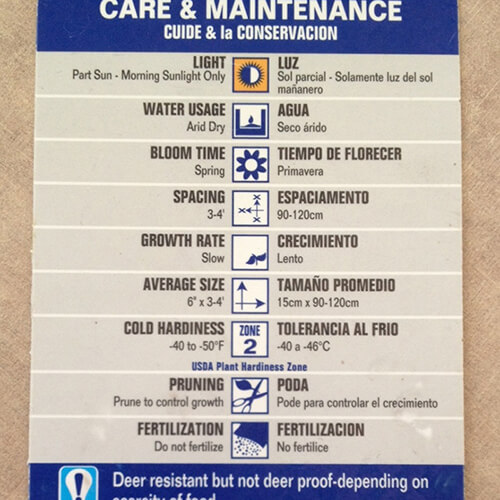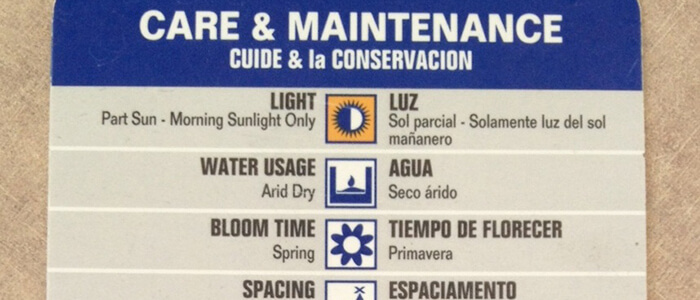Understanding Plant Labels

Florida-Friendly Landscaping™ in a Minute
Episode Archive
Episode #95 | Original Air Date: July 10, 2020
Related Resources
Transcript
Take the time to read a plant’s label to make sure it’s the right plant for your landscape.
A label often includes information like the plant’s Latin and common names, mature size, and flowering time.
It can indicate whether the plant performs best in acidic, alkaline, or neutral soil. You may also be able to read about its light and moisture requirements.
Pay particular attention to the part of the label that tells you the plant’s mature size. Even so-called dwarf varieties of certain plants can get very large. Knowing how tall and wide a plant will get when it’s fully grown is essential for proper site selection.
Florida-Friendly Landscaping™ in a Minute is a production of the University of Florida’s Florida-Friendly Landscaping™ Program, IFAS Extension, and WUFT-FM in cooperation with the Florida Department of Environmental Protection.

